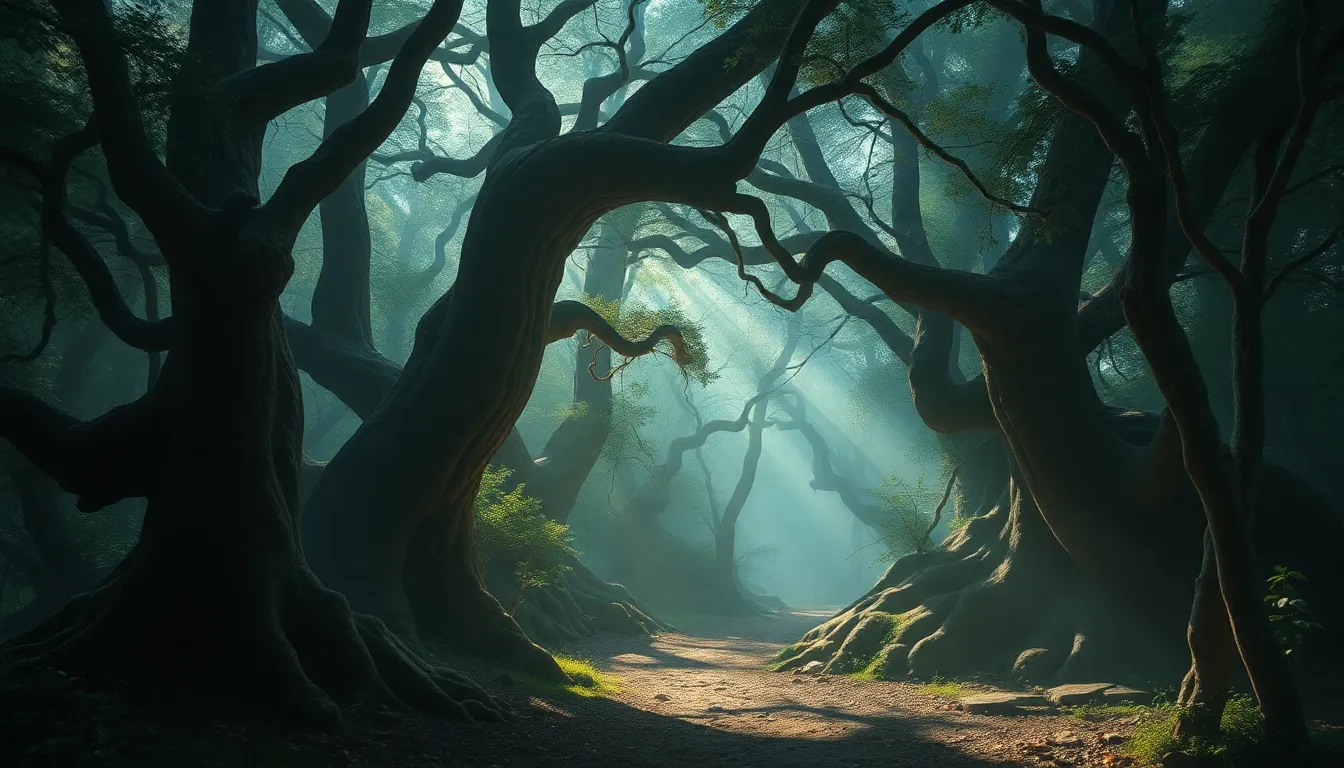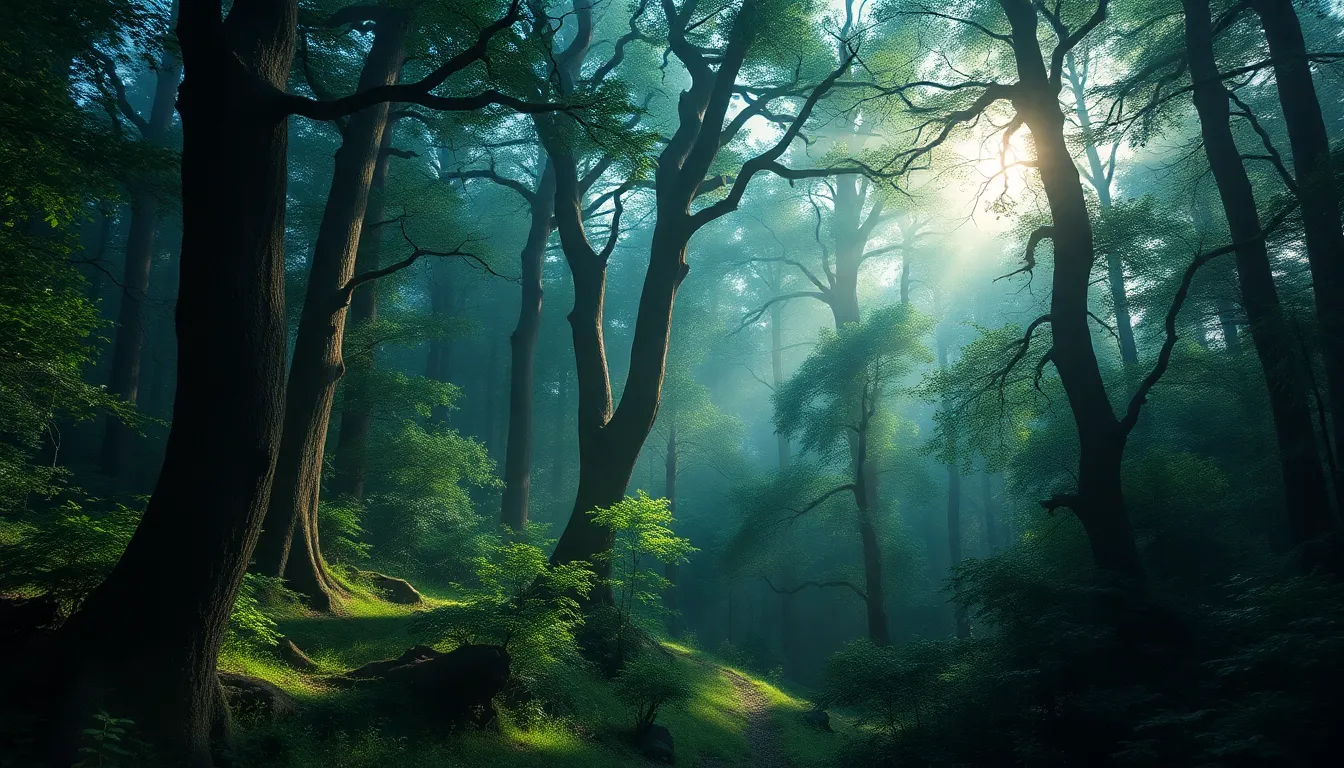The Enchanted Forest: A Journey into Mythical Realms
Introduction to the Enchanted Forest
Enchanted forests have long held a special place in folklore and mythology, acting as mystical realms where the ordinary meets the extraordinary. These magical woods are often characterized by their ethereal beauty, where trees whisper ancient secrets, and light dances in unexpected patterns. In this article, we embark on a journey through the enchanting world of these forests, exploring their historical roots, symbolism, and the myriad of mythical creatures that inhabit them.
Historical Roots of Enchanted Forests
Enchanted forests are steeped in history, with roots tracing back to ancient myths and legends. Across various cultures, these forests have served as settings for pivotal tales of adventure and transformation.
- Celtic Mythology: In Celtic lore, forests were often viewed as sacred spaces inhabited by fae folk and other magical beings. The concept of the Otherworld was often accessed through enchanted groves.
- Norse Legends: The Norse believed in Yggdrasil, the World Tree, which connected different realms, illustrating the deep connection between forests and the cosmos.
- Asian Traditions: In many Asian cultures, forests are seen as places of enlightenment, where one can encounter spirits and discover inner peace, as exemplified by the tales of forest hermits and sages.
Symbolism and Archetypes Found in Enchanted Forests
The enchanted forest is rich in symbolism, often embodying themes of transformation, adventure, and the unknown. It serves as a pivotal backdrop for the archetype of the hero’s journey, where characters embark on quests that challenge their courage and resolve.
- Transformation: Characters often undergo significant personal growth when navigating the challenges presented by the forest.
- Adventure: The forest is a place of discovery, where heroes encounter magical beings and face formidable trials.
- The Unknown: The dense trees and shadows evoke both wonder and fear, representing the complexities of life’s journey.
Famous Enchanted Forests in Literature and Mythology
Many classic literary works feature enchanted forests that captivate readers with their mystery and magic. Some notable examples include:
- “A Midsummer Night’s Dream”: Shakespeare’s play features a forest where love potions and mischievous fairies create chaos among lovers.
- “The Chronicles of Narnia”: C.S. Lewis introduces readers to Narnia’s magical woods, where children discover a world filled with wonder and adventure.
Across cultures, enchanted forests share similarities yet possess unique characteristics, reflecting the values and beliefs of the societies that created them.
Creatures of the Enchanted Forest
Enchanted forests are often populated by a host of mythical beings that embody the magic of these realms. Common creatures include:
- Fairies: Often depicted as tiny, winged beings, fairies play tricks on humans or offer assistance in exchange for kindness.
- Elves: Elves are typically portrayed as wise and ethereal, guardians of the forest who possess deep connections to nature.
- Woodland Spirits: These entities represent the essence of the forest, often serving as protectors or guides for lost travelers.
These creatures not only add to the enchantment of the forests but also symbolize various aspects of human experience, such as curiosity, innocence, and the duality of nature.
The Enchanted Forest in Modern Popular Culture
In contemporary culture, enchanted forests continue to inspire filmmakers, authors, and game developers. Notable influences include:
- Disney Adaptations: Films like “Into the Woods” and “Frozen” reimagine enchanted forests, blending traditional tales with modern storytelling.
- Fantasy Novels: Authors like J.K. Rowling and Patrick Rothfuss infuse their stories with magical woods that serve as pivotal plot points.
These modern interpretations often differ from traditional narratives, focusing more on character development and themes of self-discovery while still retaining the essence of wonder associated with enchanted forests.
The Enchanted Forest as a Reflection of Human Emotion
Enchanted forests evoke a wide range of emotions, from awe and wonder to fear and trepidation. Psychologically, they resonate with our subconscious, representing the unknown aspects of life.
- Wonder: The beauty and mystery of the forest stimulate our imagination and inspire creativity.
- Fear: The dense trees and shadows can symbolize the fears we harbor in our lives, making the forest a metaphor for overcoming challenges.
- Personal Growth: Many narratives depict the forest as a place for self-discovery, where individuals confront their inner demons and emerge transformed.
Real-Life Enchanted Forests: Nature’s Own Mystical Realms
Many real-life forests inspire the myths and legends surrounding enchanted woods. Some notable examples include:
- The Black Forest (Germany): Known for its dark, dense woods and folklore, it has inspired countless tales of magic and mystery.
- Aokigahara (Japan): Also known as the Sea of Trees, this forest is steeped in legend and is often associated with both beauty and tragedy.
These forests hold ecological significance and are crucial in preserving biodiversity, further emphasizing the importance of protecting these natural wonders.
Creating Your Own Enchanted Experience
Exploring local forests with a mythical lens can enhance your connection to nature. Here are some tips for cultivating an enchanted experience:
- Storytelling: Share or create stories inspired by your surroundings, imagining the creatures that might inhabit the forest.
- Nature Walks: Take leisurely walks, allowing yourself to explore and appreciate the sights and sounds of the forest.
- Art Activities: Engage in drawing, painting, or crafting based on the beauty and magic of the forest.
Conclusion: The Enduring Allure of Enchanted Forests
The allure of enchanted forests has endured through the ages, captivating the imaginations of countless generations. These mystical realms not only enrich our folklore and literature but also nurture our innate connection to nature. As we continue to explore and appreciate these magical woods, we find that they serve as a reminder of the beauty, mystery, and transformative power of the world around us.



